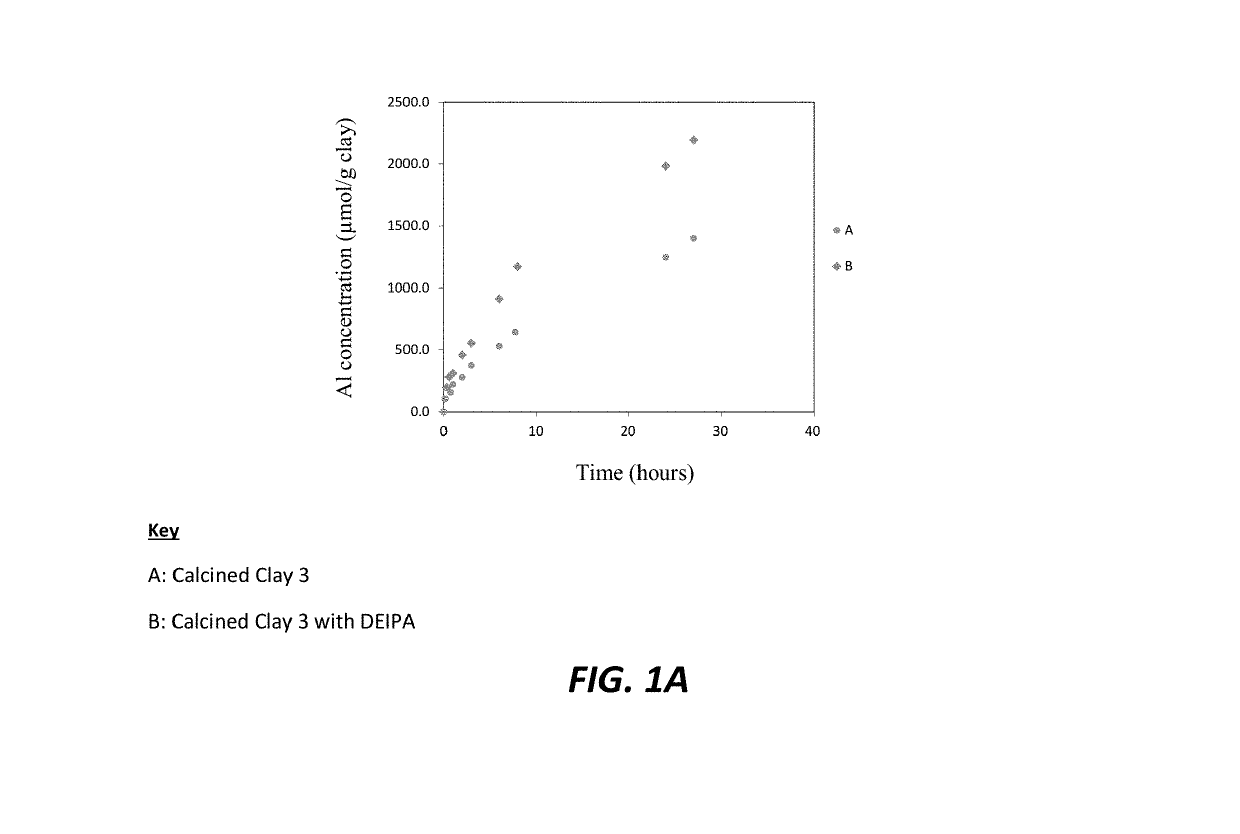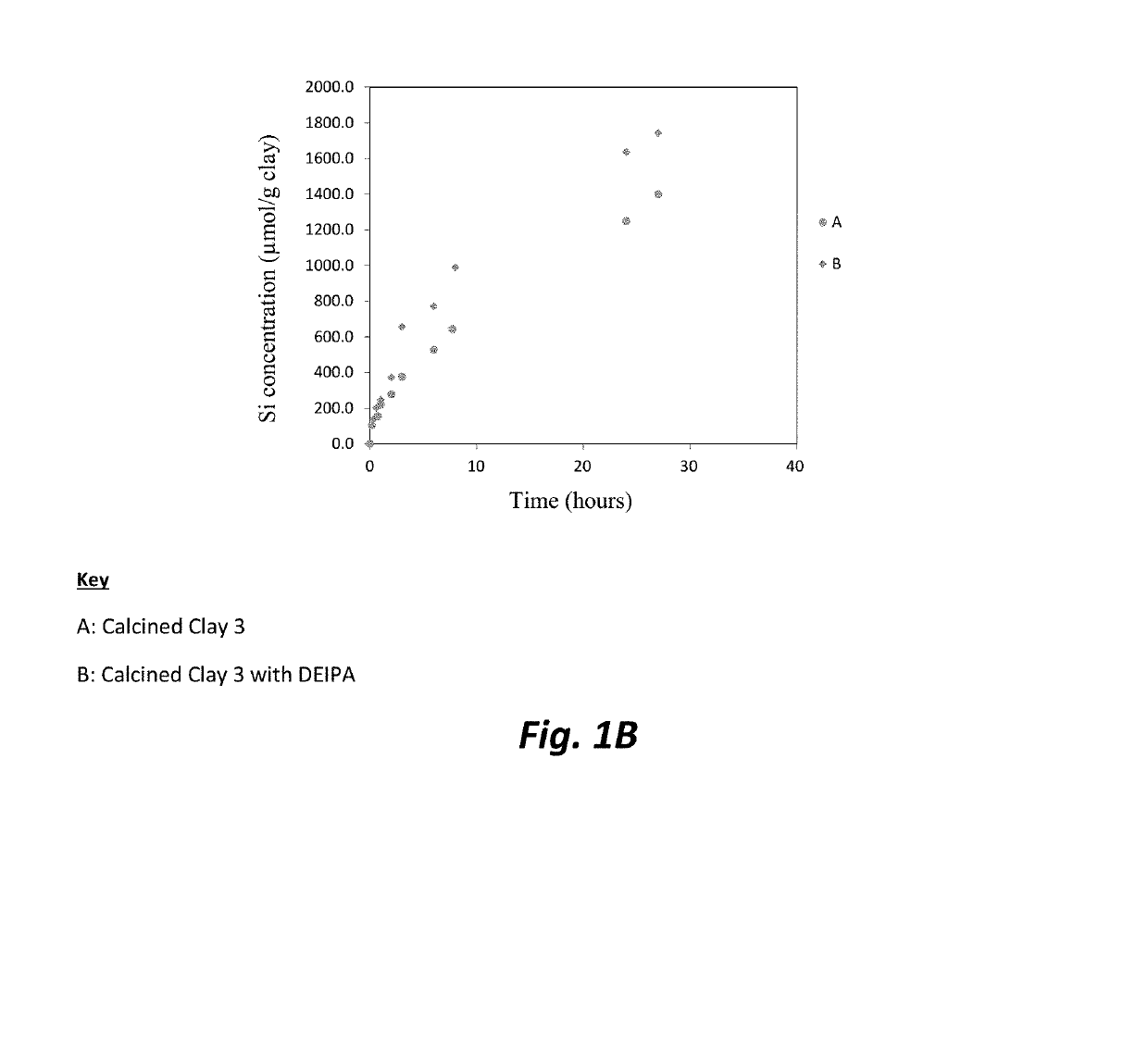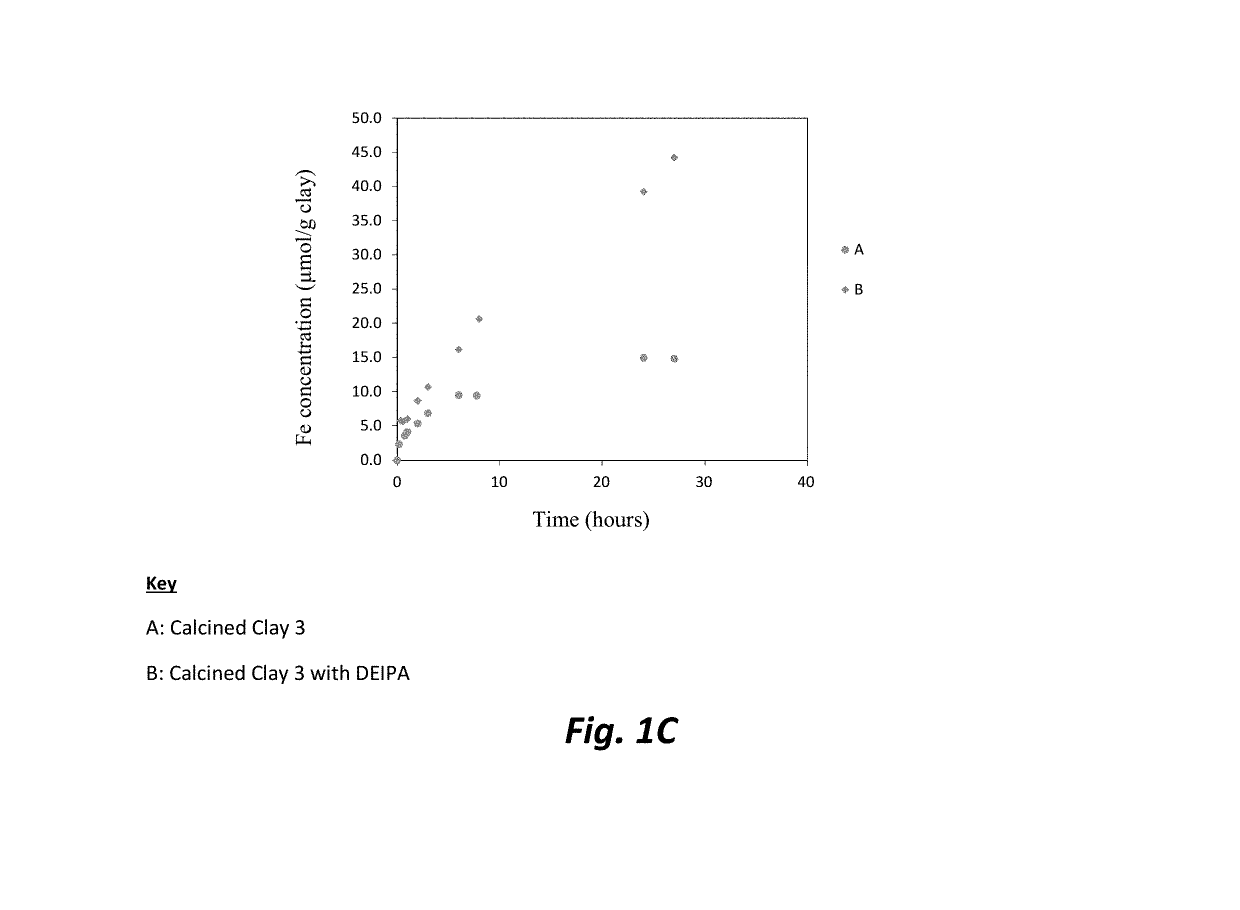Enhancing calcined clay use with inorganic binders
a technology of inorganic binding agents and calcined clay, which is applied in the direction of solid waste management, sustainable waste treatment, cement production, etc., can solve the problems of reducing the reactivity of clay, limiting the use of clay in ceramics and cement industries, and detection of red color, so as to enhance the pozzolanic reactivity and improve the strength properties
- Summary
- Abstract
- Description
- Claims
- Application Information
AI Technical Summary
Benefits of technology
Problems solved by technology
Method used
Image
Examples
example 1
Clay, Cement and Limestone Characterization
[0059]The oxides were measured for each calcined clay, Porland cement and limestone using X-ray fluorescence (XRF). The median particle diameter (Dv,50) was determined using a Malvern Mastersizer 3000 particle size analyzer. In addition, the total alkali equivalent (T-Alk Eq) was calculated. All values are shown in Table 1 below.
TABLE 1CalcinedCalcinedCalcinedclayclayclayPortlandLime-Oxide123cementstoneSiO241.154.755.419.3Al2O337.139.839.35.70Fe2O31.390.521.633.60CaO0.100.0963.655.0MgO0.140.180.191.600.20SO30.020.013.20Na2O0.470.120.070.20K2O0.092.150.221.20TiO24.670.381.550.30P2O50.190.550.140.20Mn2O30.040.0040.10T-Alk (Na2O +0.531.530.220.658K2O)Dv, 50 (um)151012.009.08.0
example 2
0.02% s / s DEIPA on the Dissolution Rates of Alumina, Silica and Iron from Calcined Clay Dissolution
[0060]The dissolution experiment was prepared by filling a plastic container of 250 mL of ultra-pure water created through boiling deionized water to remove any CO2. NaOH was added to increase the alkalinity of the water to obtain a pH of 13, which represents the pH of a typical cement paste pore solution. Approximately 0.25 grams (g) of sieved calcined clay was introduced to the alkaline water in a graduated cylinder. To obtain each sample from the cylinder, 5 mL of the prepared solution was removed from at a consistent height for each sample. The sample was filtered over a 2 micron filter and analyzed by inductively coupled plasma mass spectrometry (ICP). Fresh alkaline solution was added after each sampling in order to maintain a pH of 13. FIGS. 1A, 1B, and 1C illustrate the solution analysis by ICP which demonstrated that the evolution of, respectively, alumina, silica and iron, as...
example 4
ve Strength Test
[0064]The compressive strengths of both plain Portland cement and Limestone Calcined Clay Cements (LC3) were compared to LC3 containing 0.02% s / s of either DEIPA or TIPA or TEA. Mortar prisms were made according to EN-196-1:2016. From FIG. 4, it can be seen that mortar containing one of the alkanolamines have higher strength than the blank LC3 at all ages. LC3 with TEA presented the highest earlier strength until 3 days. At longer ages, TIPA was more efficient on the strength. It can be observed that, after 14 days, the compressive strength of the LC3 blank was not dramatically increased; whereas, with DEIPA and TIPA, the strength increase continued even after 28 days. Overall, in this example, DEIPA provides the better option to overcome limited early strength and stabilized later strength in LC3. Most importantly, it was surprising to note that DEIPA and TIPA were able to increase the strength to be comparable to the plain Portland cement sample at 28 days, thus pr...
PUM
| Property | Measurement | Unit |
|---|---|---|
| Fraction | aaaaa | aaaaa |
| Fraction | aaaaa | aaaaa |
| Fraction | aaaaa | aaaaa |
Abstract
Description
Claims
Application Information
 Login to View More
Login to View More - R&D
- Intellectual Property
- Life Sciences
- Materials
- Tech Scout
- Unparalleled Data Quality
- Higher Quality Content
- 60% Fewer Hallucinations
Browse by: Latest US Patents, China's latest patents, Technical Efficacy Thesaurus, Application Domain, Technology Topic, Popular Technical Reports.
© 2025 PatSnap. All rights reserved.Legal|Privacy policy|Modern Slavery Act Transparency Statement|Sitemap|About US| Contact US: help@patsnap.com



